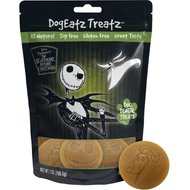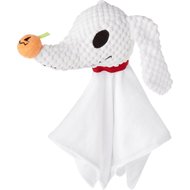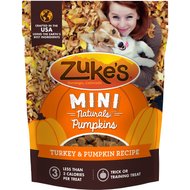I love content marketing. As someone who hates sales and marketing in general and who is also allergic to hustle culture, content marketing is not only the only form of marketing I tolerate well, but that I actually enjoy.
Why am I talking about content marketing on a pet blog?
Because if you have a pet business of any kind -- whether you're a veterinarian, a groomer, a dog trainer, a pet sitter, a pet food manufacturer, a maker and seller of cute pet accessories on Etsy, or even a pet blogger yourself -- how to market to dog owners and other types of pet parents is undoubtedly a problem you'll have to wrestle with at some point. And content marketing for your pet business is one of the most effective ways that you can reach people who are predisposed to be interested in the services, products or information you have to offer.
Content Marketing for Pet Business
What do I mean by content marketing? It's simple, really -- content marketing simply means creating meaningful content that will appeal to potential customers and clients and attract them to your website. That's it.
Content marketing is a form of what's known as "pull" marketing -- a passive form of advertising that captures interest and pulls people in where they can become curious and learn more about what you have to offer. The opposite of this is "push" marketing, more aggressive forms of marketing such as ads and direct sales that push your products and services in front of people. When people say they hate marketing, they usually mean this second kind of "in your face" marketing. On the other hand, content marketing, if done correctly, doesn't feel like marketing or selling at all. It feels more like sharing -- because that's exactly what it is.
Backing up a bit, what do I mean by "meaningful" content? Something that will provide value for your potential customer -- typically, information that can help them solve a problem or answer a question they have. But meaningful can also simply mean entertaining. Preferably, your content will hit that sweet spot of being both informative and entertaining at the same time -- or if not exactly entertaining, at least engaging enough that it won't feel like a slog for your audience to get through.
Content marketing can take on myriad forms: an article, a blog post, a newsletter, an infographic, a YouTube video and a podcast are just a handful of the more common examples. That's one of the things I love most about this type of marketing -- whatever your personality, whether you're the most laconic of introverts or the most outgoing of extroverts or somewhere in between, there's a form of content marketing that will suit your energy level.
But whatever form your content marketing strategy takes, it needs one vital component to truly succeed.
SEO for Your Pet Content Marketing Strategy
However engaging, entertaining or informative your content may be, it won't matter if nobody sees it. That's where SEO comes in. You've probably heard of SEO, and you probably already know that it stands for Search Engine Optimization, but you might not know much beyond that. A true SEO expert could regale you with lengthy articles explaining algorithms and metrics and and other terms that would likely make your eyes glaze over, but you don't need to know all of that in order to effectively use SEO as part of your pet business content marketing strategy. All you need to know are a few best practices for SEO and how to implement them.
But first, a quick sidebar on why SEO is important, and why you don't want to blow it off or treat it like an afterthought: SEO is what makes it easy for people who are looking for the information you have to offer to find that information. Think of a search engine like a match maker that matches your desired audience with your content.
You posted an awesome recipe for gluten-free peanut butter dog treats? SEO will help get your recipe in front of people who are looking for awesome gluten-free dog treats. You created a video on how to teach puppies not to bite? SEO can help match your video with puppy parents who are tired of chewed up fingers. In short, SEO can help get more proverbial eyes on your content -- eyes belonging to people who are searching for the exact type of content you have to offer.
With that in mind, here are a few best practices that can make the difference between your content actually being seen or languishing in obscurity on page five of a web search:
1. Use key search terms in your content
2. Build external links back to your content
3. Create internal links between your content
Let's break these down.
Using Key Search Terms in Your Content
Key search terms, also known as key words or key phrases, are what tells search engines that your content is relevant to what someone is searching for. When you enter a word or phrase into a search engine, the search engine sends out robots to scour the internet for content that's highly relevant to that search term and then present that content in order of what is most likely to satisfy your search request. So if you want your article or video to show up on the first page when someone searches "how to trim my dog's nails," you need to include that phrase multiple times throughout your article.
But good SEO isn't a matter of cramming as many relevant search terms as you can think of into your content as many times as possible. That's called keyword stuffing, and it's a practice that can backfire, getting your content pushed way, way down in the rankings, or possibly de-listed from search listings altogether.
It's much more effective to focus on one or two highly relevant search terms, or at most three, and place them strategically throughout your content. Where to place your key words? Follow these rules:
1. In the title - the title of your article, blog post, YouTube video, etc. should contain your primary key phrase. So using the above example, you would title your content, "How to Trim My Dog's Nails." If that's not catchy enough for you, save your spice for after the key phrase: "How to Trim My Dog's Nails: Expert Tips for Safe and Stress-Free Nail Trimming at Home." Remember that an eye-catching title won't catch any eyes if it's too far down in the search rankings.
2. In the first paragraph - generally, it's a good idea to use both your primary and secondary key search phrases within the first 100 words of your written content. That goes for descriptions on YouTube videos and podcast episodes as well as articles and blog posts.
3. In section headings - when it comes to articles and blog posts, a bonus SEO tip is to use a format that's easy to read and easily skimmable. That means using short paragraphs and breaking your content up into sections with their own headings and subheadings. These section headings are a great place to highlight your key search terms.
4. In image file names, alt tags and title tags - When adding images to your content, most content management systems or blogging platforms will provide fields where you can enter or change the image file name as well as the alt and title tags. These are all great places to insert your primary target search term and give your SEO an extra boost.
5. In the URL of your post - Typically, your content management system will automatically do this for you when you include your key phrase in the title of your post. But if it doesn't, if possible, edit your content's URL to include your key phrase.
So how often should your key words appear in your content? Twice for each key phrase at a minimum. For longer content, such as articles longer than 800 words or so, aim for at least four times for your primary key phrase, not counting your title, URL and image tags. But try not to use it more than six times. You don't want to risk getting penalized for overdoing it.
Building External Links to Your Content
As essential as good keywords are, effective SEO for marketing to dog owners isn't built on keywords alone. External links -- links to your content from other blogs and websites, also known as back links -- will also help to make or break your search engine rankings. The higher quality the links -- that is, the more popular and trusted the websites linking back to your content -- the better. These external links act as votes of confidence that let those busy little search engine robots know your content can be trusted.
External links can be a bit of a road block when developing your content's SEO. After all, you don't have a lot of control over whether another blogger or content creator decides to link to your content. But it's not completely out of your control. Here are a few creative ways you can build back links to your content:
1. Write articles and guest posts for high-profile blogs that allow guest posters to include a byline or bio. Include a link in your byline to relevant content or a landing page on your own website.
2. Seek out interview opportunities. Become a go-to expert on YouTube shows and podcasts and ask the hosts to provide links to your content in the video description or show notes.
3. Sign up as an expert to Help a Reporter Out. Freelance writers and journalists use this service to find expert sources to quote in their articles, typically in exchange for full credit with a link back to your website.
4. Ask. It takes a little more courage, but there's no harm in approaching a blogger or content creator whose audience is similar to yours if they think their audience might be interested in your content. If they have content that's also relevant to your own audience, offer to return the favor. The key word here is relevant. Don't approach a blog that has nothing to do with the topic you're writing about and expect a positive response. You'll need to do a little research to find platforms that are a good match for your content.
5. Create your own. Articles you post to Medium.com, videos you post to YouTube, a separate blog you've got on a separate domain, and other platforms you operate external to the website or content you're promoting are all places where you can link back to your content and provide an SEO backlink boost.
Creating Internal Links Between Your Content
Internal links -- links between posts and pages on your own website or blog -- are much easier to achieve. As such, they don't carry the same weight as external back links, but they still help provide a shot of positive "link juice" to your SEO, with the added benefit of encouraging people to spend more time on your content platform, getting to know more about you and what you have to offer (for an example of how to do this well, look no further than the next paragraph).
So there you have it -- a rundown of how content marketing and SEO can help attract new customers or clients to your pet business. Need help putting it all into practice? A content marketing writer such as myself can help you develop and implement a strategy that will target and appeal to your ideal customer. Click here to learn more about what I do and how I might be able to help.


























































